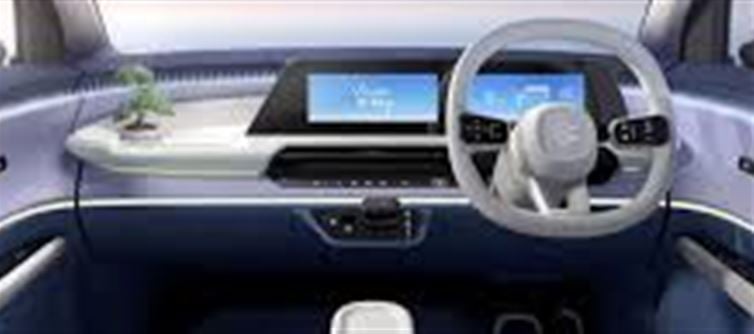
Suzuki has just revealed its Vision e-Sky concept ahead of the Japan Mobility Show 2025, offering a sneak peek into its future plans for electric vehicles (EVs). This new concept vehicle highlights the brand’s vision for a compact electric car with a unique and quirky design, promising an eco-friendly, high-performance option for the urban commuter. Here’s everything you need to know about the Vision e-Sky and what it means for Suzuki’s electric future.
1. The Vision e-Sky: A Bold Step Towards the Future
The Vision e-Sky is more than just a concept; it’s a bold statement about Suzuki’s commitment to electric mobility. Designed as a born-electric vehicle, this compact EV showcases Suzuki’s ambition to create an eco-friendly car that doesn't compromise on style or functionality.
This concept embodies Suzuki’s "Unique, Smart, Positive" design philosophy, emphasizing a mix of futuristic aesthetics, innovative tech, and practicality. As the world transitions towards sustainable mobility, Suzuki is positioning itself as a key player in the electric vehicle market.
2. Quirky Yet Practical Design
One of the most striking features of the Vision e-Sky is its quirky design. The compact dimensions, paired with a sleek, futuristic look, make it stand out in a market flooded with conventional designs. Some highlights of the exterior include:
· Sharp, Angular Body Lines: The design features sharp edges and modern angles, making the car look like something straight out of a sci-fi movie.
· Unique LED Light Signature: The front and rear lights are designed in a way that adds to the futuristic aesthetic, while maintaining practicality.
· Compact Form Factor: The car is expected to be agile and ideal for urban commutes, with a footprint that makes it maneuverable in crowded city streets.
While the quirky design may appeal to urban dwellers looking for something different, it doesn’t forget the essential qualities of a compact city car, ensuring that it remains space-efficient and easy to park.
3. Impressive Range: 270+ km on a Single Charge
One of the biggest concerns for EV buyers is range anxiety—the fear of running out of power before reaching a charging station. Suzuki addresses this concern with the Vision e-Sky’s impressive range of over 270 kilometers on a single charge. This range is expected to be perfect for daily commutes, weekend trips, and long drives around the city, making it an ideal choice for urban drivers.
With growing infrastructure for fast-charging networks, the Vision e-Sky will likely be able to support rapid charging, further enhancing its appeal for customers looking for an efficient, hassle-free driving experience.
4. Born-Electric Design: Sustainability at Its Core
As a born-electric vehicle, the Vision e-Sky doesn’t rely on any combustion engine adaptations, ensuring it is fully optimized for electric driving. This means that the car is designed with:
· Sustainability: Suzuki is focusing on using eco-friendly materials and manufacturing processes to reduce the carbon footprint during production.
· Efficient Energy Use: The car’s powertrain and design have been optimized to offer maximum efficiency, improving the range and lowering energy consumption.
In addition to this, the Vision e-Sky will come with features such as regenerative braking, energy-efficient climate control systems, and lightweight components to maximize energy conservation.
5. Expected Features and Technologies
Although the full technical specifications and features of the Vision e-Sky have not been fully disclosed, we can expect the following cutting-edge features:
· Advanced Infotainment System: The interior will likely feature a high-tech infotainment system, offering integration with smartphones, voice controls, and intuitive touchscreens.
· Autonomous Driving Capabilities: Suzuki has hinted at incorporating driver assistance technologies, which may include autonomous driving capabilities, adaptive cruise control, lane-keeping assist, and more.
· Sustainable Interior Materials: Expect eco-friendly upholstery and materials that reflect the car's commitment to sustainability, such as recycled plastics and vegan leather.
6. Global Launch and Production Timeline
Suzuki has confirmed that the Vision e-Sky will enter production globally by FY2026. This is a crucial step for Suzuki as it aims to meet growing demand for electric vehicles worldwide and capture a share of the global EV market. The compact EV will be positioned as an affordable, eco-friendly option for urban drivers, and we expect to see it hit the Indian market soon after its global release.
7. Will the Vision e-Sky Revolutionize the Compact EV Market?
Suzuki’s Vision e-Sky could be a game-changer in the compact electric vehicle segment. With affordable pricing, long-range capabilities, and a quirky design, it holds the potential to appeal to a wide range of customers, particularly in markets like India, where Suzuki already enjoys a strong presence. The affordable EV sector is growing rapidly in the country, and with an attractive price point, the Vision e-Sky might just be the perfect fit for eco-conscious urban buyers.
Final Thoughts
The Suzuki Vision e-Sky concept is an exciting preview of what’s to come in the electric vehicle landscape. With its striking design, 270+ km range, and eco-friendly philosophy, it offers a compelling glimpse into the future of affordable electric cars. As Suzuki moves towards production in 2026, this car is poised to become a popular choice among environmentally conscious drivers looking for a practical, stylish, and sustainable mode of transportation.
Disclaimer:
The views and opinions expressed in this article are those of the author and do not necessarily reflect the official policy or position of any agency, organization, employer, or company. All information provided is for general informational purposes only. While every effort has been made to ensure accuracy, we make no representations or warranties of any kind, express or implied, about the completeness, reliability, or suitability of the information contained herein. Readers are advised to verify facts and seek professional advice where necessary. Any reliance placed on such information is strictly at the reader’s own risk.




 click and follow Indiaherald WhatsApp channel
click and follow Indiaherald WhatsApp channel